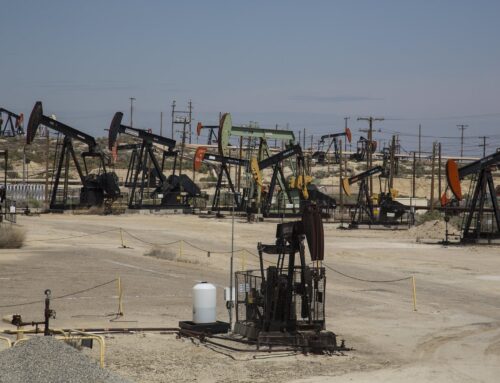This week brought scorching heat to much of the country, straining air conditioning (taking out a unit here at TCS) and leaving people hot, sweaty, and sun-drenched. Hopefully that abundant solar energy will remind Congress and the Administration to enact legislation to require adequate payment to taxpayers for renewable energy projects constructed on federal lands.
With oil still spewing into the Gulf of Mexico, Washington has been abuzz with the political theater of hearings, hearings, Presidential speeches, and more hearings. Not surprisingly, amid all of the hoopla, energy legislation that has been moribund for more than a year will find new life.
As energy legislation advances, the Administration is starting to process a large backlog of renewable energy applications going back years. The Bureau of Land Management (BLM) has identified 31 renewable energy projects (14 solar, 7 wind, 3 geothermal, and 7 transmission) as likely to successfully complete full environmental analysis and public review this year and has put them on a “fast track.” These projects will put the agency on track to meet a Congressional target of 10,000 megawatts of new renewable power from public lands by 2015.
But hard-won experience reveals that taxpayers can end up effectively handing out billions in corporate subsidies when government fails to ensure we receive the fair market value for commercial development of public lands. Subsidies that taxpayers can ill afford when facing the yawning budget deficit. Let’s review a couple examples:
-
Exhibit A: The 1995 Deep Water Royalty Relief Act (DWRRA) provides royalty “relief” for certain drilling leases in the Gulf of Mexico. At the time the law was passed, oil and gas prices were only $18/barrel. With oil prices hovering near $80/barrel, DWRRA has become one of the biggest subsidies the oil and gas industries receive, costing taxpayers as much as $50 billion in lost revenue over the next 25 years.
- Exhibit B: Under the General Mining Law of 1872, unchanged for nearly 140 years, billions of dollars of gold, uranium, silver, and copper are taken – royalty-free – from public lands each year. The 1872 law also saddles taxpayers with the hefty clean-up costs of mining operations. Estimated cost to taxpayers: upwards of $50 billion.
The Federal Land Policy and Management Act requires BLM to collect an annual rental payment for right-of-way (ROW) authorizations on public lands. ROW authorizations, however, are traditionally used by BLM to locate power lines, pipelines, and communications towers and lines on federal land. But unlike communication facilities, the federal land to be used for wind and solar power generation provides critical resource inputs that have additional value far in excess of basic rental fees charged for occupying the land.
Current law ties the agency’s hands in efforts to account for these critical resource inputs. The rental fee schedule announced last month for solar energy is a strong affirmation of the principle of fair return and a much-needed clarification of the terms for developing federal solar resources. Nevertheless, while the rental fee schedules in place for wind and solar attempt to account for critical resource inputs, they are unable to charge per unit of power produced, the most efficient method of capturing a fair return for taxpayers.
The most responsible way to foster private commercial development of wind and solar power generation on public land is to implement a system that competitively leases these inputs similar to the one used for oil and gas extraction. Congress must establish a competitive leasing system to replace the ROW authorizations currently used to convey development rights for commercial generation of renewable energy projects on public lands. Congress also needs to give the BLM the authority to charge royalties for wind and solar development that will adequately compensate taxpayers.
Doing anything less will get the taxpayer burned.










